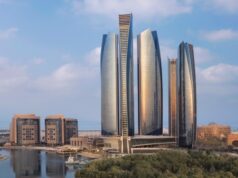
DALLAS—In January, when Pineapple Hospitality and Lodging Hospitality revved up their planning for their first Green Hospitality Conference, they expected about 75 people to register. On Wednesday, March 14, however, about 175 people attended—many signing up the day of the event. That surprise surge in attendees proved that owners and operators are hungry to learn about environmental trends and how to operate more profitably while conserving natural resources.
“We were extremely pleased with the attendance,” says Ray Burger, President of Pineapple Hospitality, Saint Charles, Mo. “The number of hotel companies represented was impressive and we appreciated the support we received from the sponsors and panelists.”
“The passion and knowledge that the collective group displayed that day was nothing short of inspiring,” says Nicholas Lakas, Director, Element Hotels. “This is a group of people that are willing to put themselves out there in an effort to dramatically change things because it is the right thing to do and for no other reason. The future of green hospitality took a great step forward this past week.”
The one-day event at the Hilton Anatole Hotel began with opening remarks from Glenn Hasek, publisher and editor of Green Lodging News. He summarized industry trends and then listed 10 reasons he is optimistic about lodging’s environmental progress. A few of the reasons include:
• The decreasing number of smoking rooms.
• An increase in LEED development.
• The growth of carbon offset programs.
• The trend toward purchasing locally made goods.
• Advances in technology that are making it easier to save energy.
• More attention on employee welfare—e.g., an increase in the use of nontoxic cleaning products.
After citing those 10 reasons, he then listed what he sees as the 10 most important environment-related challenges facing the lodging industry. A few of those challenges include:
• The dearth in what he considers to be truly green hotels.
• A lack of visionaries and leadership—especially among franchisors.
• The number of hotels that still allow smoking in guestrooms and public areas.
• The need for a standard green hotel rating system.
• Controlling unsustainable industry expansion.
• The need for a green hotels association that speaks as a voice for the industry at the government level and that offers networking and educational opportunities.
To read a complete version of Hasek’s speech, click here.
Informative Panel Discussions
Panel discussions throughout the day addressed topics ranging from indoor air quality to green design. Some of the lodging industry’s leading proponents of green operations were on hand to share their expertise. The following are some of the highlights of the panel sessions.
In the “Past Present Future” session, panelists were asked why the lodging industry is finally taking a serious look at green operations. Michelle White, Vice President of Environmental Affairs for Fairmont Hotels & Resorts, said environmental protection is a high priority for consumers used to recycling and conserving at home and they expect the same practices when they travel. Hoteliers are also waking up to the fact that greening operations saves a lot of money and creates a lot of public relations and marketing value.
In that same session, Element Hotels’ Lakas said government regulations are pushing developers to build green hotels. He cited Washington, D.C. as an example of a city that will be requiring green construction.
Deirdre Wallace, President, The Ambrose Group L.L.C., said employees working at her eco-boutique hotel, The Ambrose, in Santa Monica, Calif., are healthier and happier because of the decision to go green.
Attendees peppered panelists throughout the day with questions regarding the cost of building a green hotel compared to a standard hotel. Responses varied from just 2 percent to 8 percent or more. Element Hotels’ Lakas said FF&E not made overseas can cost 30 to 40 percent more, which helps to raise overall development costs.
In a session focusing on design and construction, Gerry Link, general manager of the Hilton Vancouver Washington, said the City of Portland, Oregon’s decision to build that hotel to LEED standards resulted in $2.5 million in media coverage.
“You don’t have to give up luxury to go green,” Link said.
Yuen Chang, representing the American Canyon, Calif.-based Gaia Napa Valley Hotel & Spa, offered advice to those considering building a green hotel.
“Be sure to find the right consultants,” he emphasized.
Marketing Clean Air
At an “IAQ—Air Wars” roundtable, Lonnie Funk, President, Rolling Oaks Hospitality, led a discussion that highlighted issues connected to the nonsmoking trend. Roundtable participants included hoteliers representing hotels that have been 100 percent nonsmoking for years to one major resort company that still offers its guests smoking room options.
Tom Pickles, Director of Operations for Pure Solutions NA, Buffalo, N.Y., explained his company’s PURE Allergy Friendly Room concept to roundtable participants. Pickels said his company’s solution, which includes features such as air filtration, mattress and pillow encasements, and HVAC system cleaning, has been successfully implemented at hotels around the United States. In midscale hotels, he said, owners have been charging a premium rate for the PURE rooms.
David Oakey, the keynote speaker, provided a sobering presentation regarding Earth’s environmental health. Oakey is the founder of David Oakey Designs and has worked with companies such as carpet manufacturer Interface Corp.
“Every 24 hours, 200,000 acres of rainforests are lost,” Oakey said. “In addition, 130 plant or animal species become extinct. Global consumption of water doubles every 20 years.”
Several times during his presentation, Oakey showed video clips of his mentor, Janine Benyus, author of the book, Biomimicry. Referencing Benyus, Oakey explained that business should work harder to mimic what nature already has done, especially in building design. He showed a slide of one office building in Africa that stays at 75 degrees during the day without the use of air-conditioning.
Pineapple Hospitality’s Ray Burger wrapped up the event by asking attendees to keep a lookout for news regarding Green Hospitality Conference 2008.
Glenn Hasek can be reached at editor@greenlodgingnews.com.







